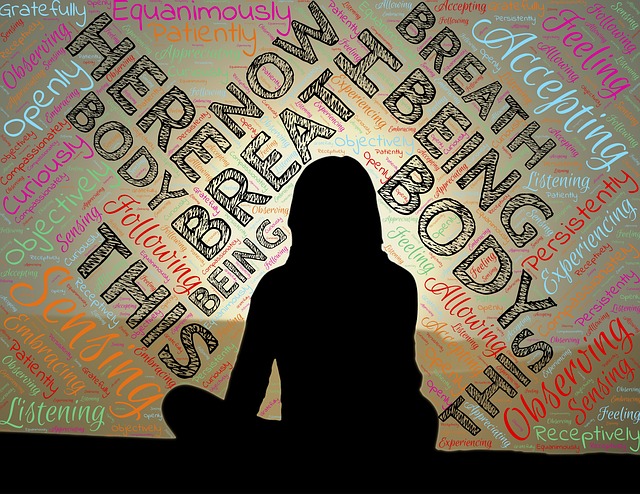Eleni Stamboulakis, 2017
“Take it off! You Muslim terrorist!”. Those were the words unapologetically hurled at an Australian Muslim female student in January this year for wearing an Islamic veil, captured on camera (“Woman captured on camera”, 2017). Australia is often lauded a richly diverse, multicultural and tolerant society that makes us unique in the global context. But living in a society with an entrenched multicultural character has not made us immune from prejudice against minority or ‘outgroups’. Since the terror attacks of September 2011, there has been a rising negative sentiment towards Muslims. This has played out across Australia in schoolyards, workplaces, media outlets and even disappointingly by some of our Parliamentarians, as Australian Muslims have become an easy target for prejudicial attitudes. Prejudice can rear its ugly head explicitly through discriminatory behaviour as with the verbal abuse towards the Australian Muslim student for merely donning her veil, or more subtly, through implicit biases we unconsciously hold that can affect our attitudes and behaviours towards others. How can we, individually and collectively as a society, tackle implicit biases that manifest towards outgroups such as Australian Muslims?
One way to reduce implicit bias towards outgroups is by encouraging people to actively see the world from another’s view – formally known as perspective taking (Todd, Bodenhausen, Richeson & Galinsky, 2011). In a study conducted by Todd et al, people who engaged in perspective taking reported significantly weaker implicit racial bias. This research also links perspective taking with increased positive sentiment towards outgroups, as well as changes in behaviour towards outgroups. Other research has found that perspective taking assists social bonds to form through increased contact with outgroup members (Wang, Kenneth, Ku &Galinsky, 2014). Similarly, fostering social connections between different cultural groups has also been shown to reduce implicit bias towards outgroups (Brannon & Walton, 2013). In one 2013 study, cues of social connection were found to increase a person’s interest in another’s culture (Brannon & Walton, 2013. This study builds on previous research that forming a common ingroup identify can decrease explicit racial prejudice (Dovidio, Ten Vergert, Stewart, Gaertner, Johnson, Esses & Pearson, 2004).
Encouraging ourselves and those around us to contemplate the mental state and experience of Muslim Australians who are subject to much unwarranted prejudice may be a powerful tool for increasing positivity towards this (and other) outgroups. But just how enthusiastic should we be about strategies such as perspective taking to remediate prejudice? A number of studies show us that perspective taking can be unsuccessful in moderating prejudice in certain instances (see Todd & Galinsky, 2014). For example, the efficacy of perspective taking has been tainted where the perspective taker has low self-esteem (Galinsky & Ku, 2004; Todd and Burgmer, 2013, as cited in Todd and Galinsky, 2014). Another concern with the reported positive effects of perspective taking is that most studies test it in an artificial way, in an experimental setting, which makes its generalisability a live issue (Paluck & Green, 2009, as cited in Todd & Galinsky, 2014). Is there a better way to tackle prejudice in our community?
There have been many reported benefits of mindfulness – bringing one’s focus into the present moment – and in recent years the mindfulness movement has transitioned from an alternative practice to one with mainstream acceptance. What, if anything, does mindfulness have to do with tackling prejudice towards outgroups? A recent study from 2015 provides evidence for a novel way of reducing implicit bias, using mindfulness meditation (Lueke & Gibson, 2015). This study suggests that people who engage in mindfulness meditation have reduced implicit racial bias compared to people who did not engage in that meditation. Another intriguing aspect of the study’s findings was the significant reduction in automatic negative associations towards outgroups. Unlike other prejudice reduction strategies such as perspective taking, this research provides evidence for tackling prejudice without that being the focus of the meditation practice. The meditation was solely directed towards mindfulness in general, with no specific focus on reducing prejudice. The implications of this finding are huge, particularly as mindfulness embeds itself into mainstream society in schools, workplaces and other contexts. The simple strategy of becoming more mindful offers an accessible way to mute or eradicate the automatic biases we unconsciously hold. We have a real opportunity to use mindfulness techniques in a way that can improve intergroup relations in our community.
Other techniques that could complement mindfulness practices to improve intergroup relations are diversity training (Ehrke & Steffens, 2014) and online platforms that encourage ingroup and outgroup members to interact electronically (White et al, 2015). When considered against laboratory tested perspective taking, mindfulness meditation, diversity training and electronic contact are more accessible, real-world ways to promote tolerance and understanding of difference, reducing implicit bias along the way.
While breaking down implicit bias requires a multifaceted approach, strategies that are not overtly targeted towards reducing prejudice – such as mindfulness meditation – may be a simpler, more accessible way to tackle prejudice. Mindfulness meditation holds a lot of promise as a fresh way of potentially switching off some of our implicit biases; understanding its full potential is an exciting opportunity for improved intergroup relations in our community.
References
Brannon, T., & Walton, G. (2013). Enacting cultural interests: How intergroup contact reduces prejudice by sparking interest in an out-group’s culture. Psychological Science, 24(10), 1947–1957.
Dovidio, John F., Ten Vergert, Marleen., Stewart, Tracie L., Gaertner, Samuel L., Johnson, James D., Esses, Victoria M., Pearson, Adam R. (2004). Perspective and prejudice: Antecedents and mediating mechanisms. Personality & Social Psychology Bulletin, 30(12), 1537.
Ehrke, F., Berthold, A., & Steffens, M. (2014). How diversity training can change attitudes: Increasing perceived complexity of superordinate groups to improve intergroup relations. Journal of Experimental Social Psychology, 53, 193.
Lueke, A., & Gibson, B. (2015). Mindfulness meditation reduces implicit age and race bias. Social Psychological and Personality Science, 6(3), 284–291.
Todd, Andrew R., & Galinsky, Adam D. (2014). Perspective-taking as a strategy for improving intergroup relations: Evidence, mechanisms and qualifications. Social and Personality Psychology Compass, 8(7), 374–387.
Todd, Andrew R., & Burgmer, Pascal. (2013). Perspective taking and automatic intergroup evaluation change: Testing an associative self-anchoring account. Journal of Personality and Social Psychology, 104(5), 786.
Todd, Andrew R., Bodenhausen, Galen V., Richeson, Jennifer A., & Galinsky, Adam D. (2011). Perspective taking combats automatic expressions of racial bias. Journal of Personality and Social Psychology, 100(6), 1027–1042.
Wang, Cynthia S., Kenneth, Tai, Ku, Gillian., & Galinsky, Adam D. (2014). Perspective- taking increases willingness to engage in intergroup contact. PLoS ONE, 9(1), e85681. doi:10.1371/journal.pone.0085681
White, F. A., Harvey, L. J., & Abu-Rayya, H. (2015). Improving intergroup relations in the internet age: A critical review. Review of General Psychology, 19(2), 129–139. doi:10.1037/gpr0000036
Woman captured on camera abusing a Muslim student wearing a niqab: ‘Take it off, you terrorist’ (2017, January 23), The Sunday Telegraph. Retrieved fromhttp://www.dailytelegraph.com.au/news/nsw/woman-captured-on-camera-abusing-a-muslim-student-wearing-a-niqab-take-it-off-you-terrorist/news-story/b2e0caba6a134e272781570ca56e3e54



Recent Comments